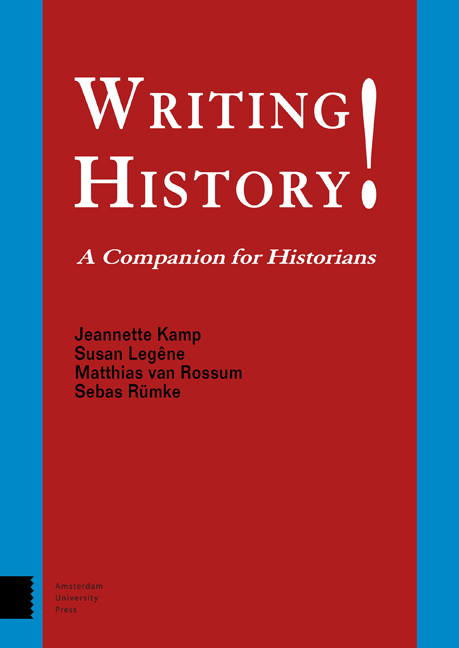Book contents
- Frontmatter
- Contents
- Introduction
- Structure of the Book
- 1 Historical Research: The Importance of the Research Question
- 2 The Building Blocks of the Historical Method
- 3 Applying the Historical Method
- 4 Writing History: Narrative and Argument
- 5 Presentation and Historical Debate
- 6 A Historian – Now What?
- Appendices
- I Guidelines for Notes
- II Other Styles of Notes
- Acknowledgements
- Index
3 - Applying the Historical Method
- Frontmatter
- Contents
- Introduction
- Structure of the Book
- 1 Historical Research: The Importance of the Research Question
- 2 The Building Blocks of the Historical Method
- 3 Applying the Historical Method
- 4 Writing History: Narrative and Argument
- 5 Presentation and Historical Debate
- 6 A Historian – Now What?
- Appendices
- I Guidelines for Notes
- II Other Styles of Notes
- Acknowledgements
- Index
Summary
Now that you know where you can find literature and sources and how you should approach them, we will consider more fully how you can organise the information and do research. First of all, historical research is an incremental process. You cannot begin to write until you have obtained the information. If you do so, you run the danger of working selectively and, for instance, searching only for information that accords with what you want to say. Research means asking questions and being ready to accept unexpected answers. It is a process in which research plans and questions must be constantly adjusted in accordance with the (interim) results of the research. Therefore, it is also important to gain insight into how this research works. How do you really conduct literature research? How do you read a text and decide what is important? How do you research sources? How do you select your material? How do you organise your data? You need this knowledge and these skills to reach – via the formulation of a research plan, the adjustment of the research question, and completion of the research – the phase in which you can begin to write. This chapter focuses on the important research phases that precede the writing process, which will be dealt with in the next chapter.
Five steps towards a definitive research design
As we explained in the previous chapters, doing research and writing an academic publication is a step-by-step process. This is represented in Diagram 2 (page 64]).
It begins with a provisional research question (1), followed by the exploration of literature (2) in order to position the research in a historical debate. A good question will follow up on earlier debates or throw new light on a neglected theme in the existing historiography. Therefore, to make the question more precise (3), part of the research must already be done. This leads to a status quaestionis – the presentation of the historiographical debates on your subject. After this step follows a further exploration and study of the sources (4). Having completed all these steps, you can then write a definitive research plan (5).
- Type
- Chapter
- Information
- Writing History!A Companion for Historians, pp. 61 - 82Publisher: Amsterdam University PressPrint publication year: 2018

